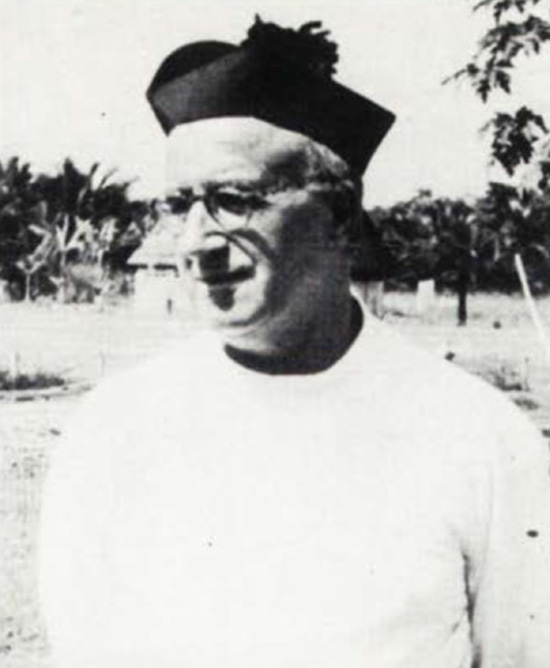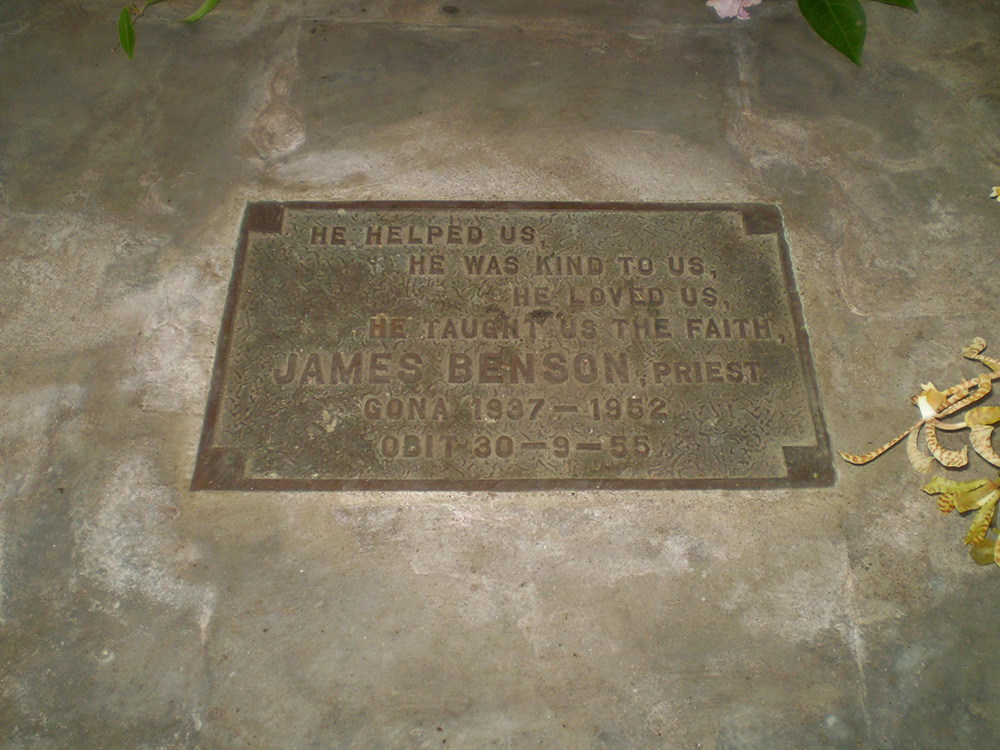Martyrs of New Guinea – Father James Benson’s Story
“It was July 21st, 1942. It had been an ordinary sort of day, and at about 4.30 in the afternoon I was in the workshop repairing a small deck-chair which I used when travelling on the six-foot by four-foot decks of our local canoes. Suddenly I heard cries of fear from the beach, and a second later a boy rushed to the door, shouting: ‘Father! Great ships are here.’ I ran out and saw, coming in from the north-west and not more than a mile away, a merchantman of some five thousand tons, she was escorted by two destroyers, one on either side and close in, while farther out to sea stood two more destroyers.”
The above excerpt from Prisoners Base and Home Again, by Fr James Benson, describes the landing at All Souls Mission, Gona of the Japanese army and the flight to safety of the mission staff, Fr James, nurse, May Hayman, and teacher, Mavis Parkinson, both from Australia.
This was the start of the Battle of Kokoda, one the bloodiest battles of World War 2, that saw the martyrdom of twelve members of the Anglican Mission in New Guinea, including May and Mavis.
The whereabouts of Fr James remained a mystery until September 1945 when Australian troops entered the Ramale valley in New Britain and found him, along with a Lutheran Bishop and other religious in a POW camp.
Fr James’ story continues:
“Suddenly I heard a great cry, then a burst of cheering. I was up in a flash and joined in the tumult of noise with the best Australian “coo-ee!” I could muster as the troops, big men in khaki, many of the stripped to the waist, came striding down our zigzag precipice track. Father Zeeland-a huge Dutchman of six foot four-was alongside me.
“Vat is dot noise you make?” he yelled in my ear.” I do not like it.” “That’s an Australian coo-ee, “ I shouted, “and you’re going to hear it again, whether you like it or not.’
I managed to work near one of the two officers, a Major Fairfax Ross, and asked him if he had news of the sisters from Gona. He caught my question and its urgency and replied quietly and with real sorrow: “The Mission Sisters from Gona? I’m afraid they are dead – murdered by the Japanese.”
I turned away with all the joy drained from me. Later when I found the major not so pressed, I asked him for details. He said he did not know the full story, but it was quite certain the Sisters were dead. “But,” he said, “who are you?’ And when I told him he cried amazement:
“Benson! But, good God, you are dead too!”
On 22nd October 1942, Bishop Philip Strong, Bishop of New Guinea, had written to Fr James’s father, David Benson, living with his family at Stockton, to tell him that information they had received indicated James had been killed. For the next three years they believed this to be true.
In the mid 1930’s while a member of the Community of the Ascension based at Goulburn, New South Wales, James had conducted a mission at Christ Church Mt. Vincent in the Hunter Valley. When it was believed he had been killed, a memorial thurible was given by the parishioners in gratitude for the mission he had conducted.
When James returned to Australia in 1945 for urgent medical treatment and recuperation, he spent part of 1946 undertaking deputation work for ABM. The family story is that he took great delight in swinging the thurible, which is still at Mt. Vincent.
Fr. James died in London in 1955 after emergency surgery to remove his appendix. His ashes are interred under the altar of Holy Cross Church, Gona. The church was renamed from All Souls after the war in honour of the only item that survived the war – the Mission Station Cross.
Howard Benson

Father James Benson © Benson family. Used with permission.
